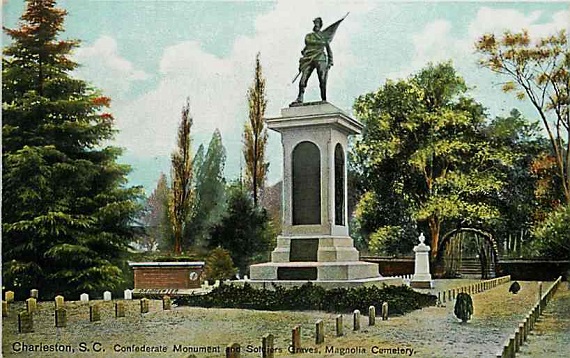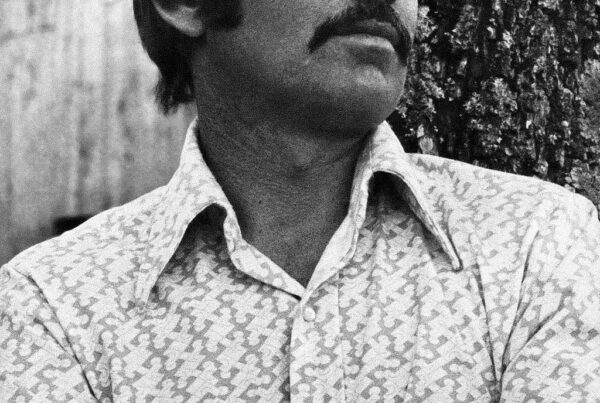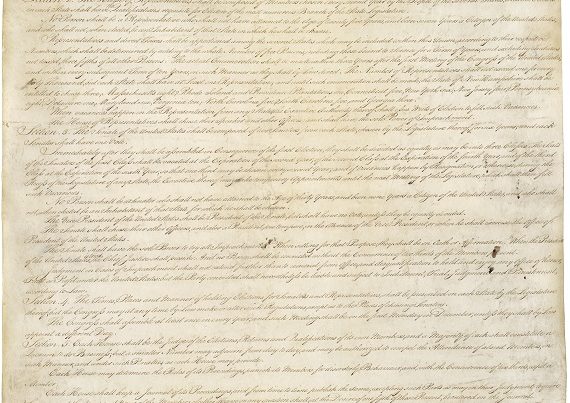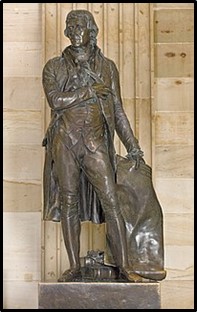
Should it be asked, why then build this monument? The answer is, they [the Confederate dead] do not need it, but posterity may. It is not their reward, but our debt. – Jefferson Davis
So said the former President of the Confederate States in a letter regretfully turning down an invitation to speak at the laying of the cornerstone for the Confederate Monument at Macon, Georgia on April 26, 1878. Davis believed that those who survived the war owed it to those who died not just to remember them, but to see that future generations also remembered them.
Let this monument teach that heroism derives its lustre from the justice of the cause in which it is displayed, and let it mark the difference between a war waged for the robber-like purpose of conquest, and one to repel invasion—to defend a people’s hearths and altars, and to maintain their laws and liberties. Such was the war in which our heroes fell.
We’re frequently told today that Confederate monuments are “monuments to white supremacy” erected by a “cult of the Lost Cause”, often put in place as a finger in the eye to the local black population during Jim Crow and assert white supremacy. That is the modern view from certain corners of the news media and liberal academia, but shouldn’t we look at what the people who had these built had to say about them? They just might have a better idea of their motives in doing so than the SPLC or various modern day mayors and city councils. Jefferson Davis, though not part of the Ladies’ memorial organization that commissioned the Macon monument, was asked to speak by those ladies so it is fair to assume his views would meet with their approval. He called that Confederate monument one intended to teach about men who were “heroes”, who died in a just cause, fighting to “repel invasion” and to defend home and hearth.
There was a time when not just the only Confederate President, but also the President of the United States memorialized the Confederate fallen, something nearly unthinkable today. President Taft spoke in front of the Confederate memorial in Arlington National Cemetery in 1912. On May 25, 1924, another United States President, Calvin Coolidge, offered a few short remarks in front of that same monument.
On this day we pause in memory of those who made their sacrifice in one way. In a few days we shall pause again in memory of those who made their sacrifice in another way. They were all Americans, all contending for what they believed were their rights. On many a battle field they sleep side by side. Here, in a place set aside for the resting place of those who have performed military duty, both make a final bivouac. But their country lives.
The bitterness of conflict is passed. Time has softened; discretion has changed it. Your country respects you for cherishing the memory of those who wore the gray. You respect others who cherish the memory of those who wore the blue. In that mutual respect may there be a firmer friendship, a stronger and more glorious Union.1
Photographs of the occasion can be found in the May 26th Washington DC Evening Star, where President Coolidge is shown laying a wreath at the Confederate memorial, and in another photo is shown standing at the podium, holding his remarks, with the Confederate battle flag off to his left. 2 Coolidge understood what many today seemingly do not, that it is not inherently divisive to honor and remember the Confederate dead. To the contrary, in speaking to those gathered for Confederate Memorial Day, he declared “your country respects you for cherishing the memory of those who wore the gray.” Doubtless that was not one hundred percent true even then, but to whatever extent Coolidge was correct, things have changed greatly in the century since he spoke those words. The bitterness of the conflict seems to have returned.
It was not just Presidents who remembered and spoke well of the dead. Former Governor of Tennessee and former Confederate officer James D. Porter spoke at the unveiling of the Henry County Confederate monument on October 13, 1900, and he echoed the same theme as Davis, that the monument existed so it could “speak to posterity”. These men, their virtues and their sacrifices, must not be forgotten. Civilized people remember their fallen.
And I thank you, ladies, in the name of my comrades, living and dead, for providing this memorial…. You have followed the example of all civilized people — Assyrian, Indian, Greek or Roman — in this expression of gratitude and admiration. You speak to posterity through this marble in a language commemorative of the heroism of the soldiers of Henry County at the same time you illustrate your own admiration for devotion to duty under circumstances of the greatest trial.…. We cannot forget them, we cannot forget the sacrifices or the devotion of the women of the South, they accepted poverty that they might promote the cause for which their fathers, husbands and sons fought and died.3
Alfred Moore Waddell was a North Carolina lawyer and politician before and after the Civil War. During the war Waddell was in the Confederate cavalry until his health forced him to resign. He delivered an address at the unveiling of the Confederate Monument in Raleigh, NC on May 20th, 1895. He reminded the listeners that history can and will be twisted and used by those with an agenda, but that “the establishment of truth is never wrong.” Southerners must tell their side of the story, or it will be twisted to their detriment.
History, as written, if accepted in future years will consign the South to infamy.….. Now the accepted history of the late war, like the previous history of the United States, has been written by Northern men, and a Southerner, reading it, cannot help recalling what Froude said about history generally: namely, that it seemed to him “like a child’s box of letters with which we can spell any word we please. We have only to select such letters as we want, arrange them as we like, and say nothing about those which do not suit our purpose.”4
That selection of letters, arranging them to suit someone’s purposes, is an approach still taken today, and Waddell was exactly right about future historians. What he seems not to have foreseen is they would attack the very memorials he and others thought would be reminders of the truth long after his generation had passed on.
Thomas Williams Mason served with a North Carolina Confederate unit during the war, rising to the rank of Captain by the time the war ended. In his time, he was a planter, a judge, he served as railroad commissioner, and he was a polished public speaker. He gave the address at the laying of cornerstone for the Raleigh, NC Confederate monument on May 20, 1895. The new monument existed, he told the audience, to remind him and those who followed of the Confederate soldier, his comrade, and to keep the memory of the soldiers from fading:
My brothers, the memory of your comrade will not fade. In the twilight of the years to come it will be as the luminous star which led the Eastern worshippers, where a new Life had come to abide among men long enough to teach them how to live like heroes and die like martyrs. The daughters of North Carolina will point our children and our children’s children to that star. They will never turn their faces from the Confederate soldier…. To-day they have embalmed his memory in stone. They have given you this token of their love, that shall not fail. Let us lift up this token of their love, my brothers! The light of the morning will bless it, the glory of the evening will hallow it, the patient stars will watch over it, and the calm face of our comrade will teach us courage for to-day and hope for the morrow.5
Charles Colcock Jones, Georgia historian, author, manuscript collector, politician and lieutenant colonel in the Confederate army, spoke at the unveiling of the Confederate monument in Augusta, Georgia on October 31, 1878. I want to close with some of his words, because he clearly articulated exactly what these monuments were always meant to be.
Monuments are connecting links between the present and the past. They symbolize the noblenesses which have gone before, and betoken a happy recognition of them by those who come after. They denote a “just and grateful appreciation of the virtues and services they are designed to commemorate, and stand as silent yet impressive teachers of the noblest lessons.”6
Now much of what was said by these men when it comes to the purpose of these monuments should be obvious on the face of it, so much so as to not require explanation or defense, and in more rational times such a defense would not be necessary. Sometimes a spade is just a spade. Memorials are of course erected in memory of a person or event. They are built of stone or metal so they will stand the test of time and outlast those who created them, so that future generations, the posterity that several of these speakers mention, will also remember. The reason for the existence of the monument is generally inscribed on the surface somewhere so that it is not a mystery to the viewer.
Are these inscriptions “code” to cover racist ulterior motives? Were these speakers lying? Were the ladies’ associations spending years raising thousands of dollars to commission expensive works of art and were those who eulogized the dead soldiers at dedication ceremonies doing so all to cover their real racial motives? That is the modern narrative, pushed by the SPLC and others. You do not have to look far to find it. However when you examine the words of the men and women involved with the creation of these memorials you will find very little mention of race, but you will find many words praising the dead for their actions and a desire to preserve the memory of those men so that generations still to come will have physical reminders of those men and be inspired by their example.
In a day and age where we are constantly told “don’t believe your lying eyes” because Confederate Memorials are “reminders of racism”, and when a number of cities have removed monuments that stood quietly for over a century because they’re “divisive” or “offensive”, if we’re looking for the truth we have no choice but to revisit the actual words of the men and women who had them installed in the first place and to see that what they said then is a far cry from what we’re being told now. The modern activists and historians are indeed doing exactly what Alfred Waddell said, selecting such letters as they want, arranging them as they like, and saying nothing about those which do not suit their purpose.
1. https://archive.org/details/addressofpreside00unit_2/mode/2up
2. https://chroniclingamerica.loc.gov/lccn/sn83045462/1924-05-26/ed-1/seq-17/
3. https://babel.hathitrust.org/cgi/pt?id=loc.ark:/13960/t4jm2k83w&view=1up&seq=11
4. https://babel.hathitrust.org/cgi/pt?id=nc01.ark:/13960/t1pg2g53b&view=1up&seq=3
5. https://babel.hathitrust.org/cgi/pt?id=nc01.ark:/13960/t4xh0dz99&view=1up&seq=3
6. https://babel.hathitrust.org/cgi/pt?id=loc.ark:/13960/t89g5xp8h&view=1up&seq=9






